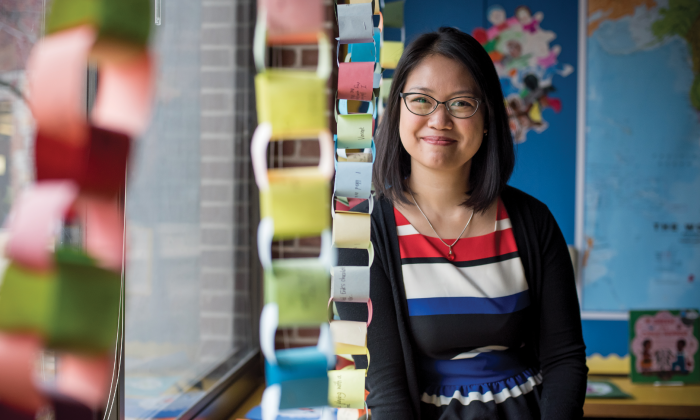
I immigrated to the United States in 2003 and earned my teaching license in 2008. When I began my career, I thought that part of the job was to blend in. I wanted to avoid shining a light on my foreignness; I just wanted people to think I had lived here my entire life.
But as I applied for U.S. citizenship in 2011, I realized that I should share this process with my students. I passed my green card around the circle for the kids to see. We practiced the civics questions together, and I let them know when it was time for me to get fingerprinted and take the test. They were just as excited as I was about every step.
At first, it just seemed like a good idea to share a real-life example of a social studies lesson. But as time went on, I learned that telling the kids about my experiences meant a lot more than that. Parents who also immigrated to the United States would find me to talk about their immigration and naturalization stories. I realized that I was serving as an all-too-rare mirror, not just for my students, but for their families as well. By opening up and telling my story, I made it OK for those narratives to emerge. I didn’t need to be afraid of shining a light on my experience because it illuminated the path for others to do the same.
In my school’s kindergarten program, we teach the kids to have empathy. We draw a “map” of our hearts and then talk to each other about it, swap hearts and try to imagine what it would feel like to have that person’s heart. We teach the kids to sit with difference and be OK with it. Some kids like Cheez-Its and some don’t. There are different ways to say the same word in different languages! We were born in different places! My hair happens to be a different color than yours! Isn’t it cool that we can learn so much about each other?
Now, whenever it feels organic to do so, I try to share stories with my students about myself: that I’m from another country, that I speak other languages and had different childhood experiences. I want the kids to know that someone who loves them and cares deeply for them is “different.” That different isn’t scary—it’s beautiful. And the kids who already feel “other” in some way feel less alone because their teacher is “different” too. Every time I sustain a microaggression, I try to channel that experience and my feelings into something good by validating these little humans: It’s OK to be you.
I can only hope and pray and wish and dream that I’m planting seeds for a better world with what I do. I refuse to give up hope that someday the world will be the accepting, kind and loving place that I know it can be. The one I see every day in kindergarten.
Regina Santiago teaches kindergarten at St. Paul Academy and Summit School in St. Paul, Minnesota.
We want to hear what motivates you to get up each morning and serve students in our nation's schools. Send your 600-word submission for the "Why I Teach" column to us here.